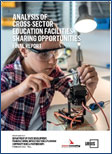 |
Analysis of cross-sector education facilities sharing opportunities
Undertaken by Solute Consulting and Urbis, on behalf of CHaPs, this report documents the outcomes of a collaborative project to analyse opportunities and options for sharing facilities between state and non-government schools and local councils in Queensland.
Read the report.
|
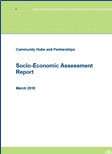 |
CHaPs commissioned Arup Pty Ltd to develop a quantitative assessment framework to measure benefits of CHaPs facilitation, asking "What value has been gained that, in the absence of CHaPs facilitation, would not have been realised?"
Read the report.
|
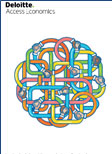 |
Deloitte Access Economics was engaged by CHaPs to undertake a review of the social and economic benefits of collaboratively planned social infrastructure. The purpose of the framework is to provide the CHaPs team and its project partners with a practical and adaptive guide for the effective planning and measurement of processes and outcomes of collaboratively planned social infrastructure projects. The value of measurement lies in its ability to observe and report change over time, which creates opportunities to contribute towards strengthening project effectiveness and continuous improving strategic decision-making for the project.
Read the report.
|
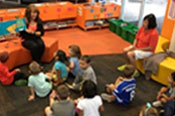 |
Our Place - Doveton College
Doveton College is the first Our Place school and, in just five years, has significantly changed outcomes for children, their families and the community.
Read the case study.
|
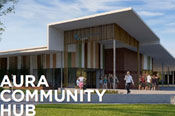 |
Aura Community Hub
Aura is one of Australia's largest master planned communities, located on the Sunshine Coast. The hub optimizes the development of a local primary school to meet population demands and to act as a catalyst site for integrated community facilities with educational and eternal community uses.
Read the case study.
|
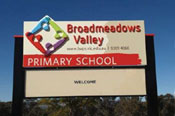 |
Broadmeadows Valley Primary School Hub
Established in 2009 this hub brings together four primary schools along with other services for children and families. The hub is part of the Communities for children strategy aimed at building a greater sense of belonging for children and families from a large culturally and linguistically diverse population.
Read the case study.
|
 |
Bruce WoodGreen Early Learning Centre
the Bruce WoodGreen Early Learning Centre is a not-for-profit child centre which serves children from 1 year 6 months to 12 years.
It was one of five pilot sites under the Toronto First Duty (TFD) program that trialled and researched a new model of delivering early learning.
Read the case study.
|
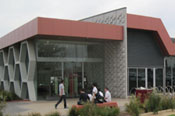 |
Caroline Springs Partnership
Caroline Springs Partnership is located in a culturally diverse municipality in Victoria, with one third born overseas and 28% from a non-English speaking background.
The partnership was a place-based initiative focussing on bringing government, business and community groups together to plan the provision of community infrastructure including community centres, education and health facilities.
Read the case study.
|
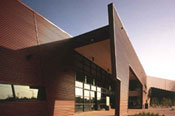 |
Clayton Community Centre
Clayton is a culturally diverse community in the City of Monash, with many new arrival residents and pockets of high unemployment, Clayton is one of the most disadvantaged communities in Monash.
This project aimed to create a safe and welcoming community space to act as the heart of Clayton. The centre comprises a range of previously disconnected government services, along with a number of other community providers.
Read the case study.
|
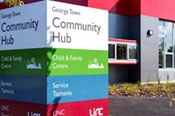 |
George Town Community Hub
George Town, a rapidly growing community within Tasmania, is relatively disadvantaged, with high unemployment and low levels of education and adult literacy. The George Town Community Hub was established in 2014, offering a new model of service delivery whereby multiple services were strategically collocated to act as a one-stop-shop, providing a range of holistic services and support for children and families.
Read the case study.
|
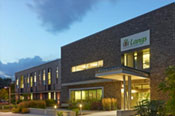 |
Langs
Langs has grown from a neighbourhood development program in 1978 into one of the largest community hubs in Ontario, with six sites. It was initially developed to address a lack of services, with a vision to provide services to help address the substantial social and economic needs in a densely populated, isolated community. The main site brings together over 20 co-located community and social services. Langs aims to build stronger and healthier communities by increasing access to a variety of services, serving all members of the community, from children to older people.
Read the case study.
|
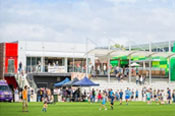 |
Manning Community Hub
Manning is a quiet residential suburb in the inner City of South Perth. The Manning Community hub was initiated in response to studies undertaken demonstrating that the existing community facilities were ageing and reaching the end of their useful life. The hub opened in February 2017 and aims to create a new "heart" for Manning through providing a multi-purpose welcoming precinct integrating a range of community and social services.
Read the case study.
|
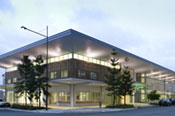 |
Pathways Learning and Leisure Centre
North Lakes is part of the Brisbane's Northern Growth Corridor, which has a young population and pockets of high unemployment. The Pathways Learning and Leisure Centre opened in 2004, aimed primarily at the needs of young families and businesses, to improve learning and employment opportunities for the community and to help small, home-based business grow.
The centre has adapted to the evolving needs of the community, with an expansion taking place in 2007 to include North Lakes State College senior school, a new community centre, a business services hub and adjacent care centre.
Read the case study.
|
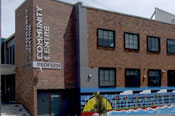 |
Redfern Community Centre
Redfern Community Centre, in the City of Sydney, is an area of concentrated disadvantage, with 7000 public housing tenants and 4% of the population of Aboriginal or Torres Strait origin, compared with 1% across the wider Sydney Metropolitan Area.
The centre was established in 2004 and serves as a multi-purpose facility that offers a range of social services and community services. The centre is open to all groups but has a relatively large user base of population with origins of Aboriginal or Torres Strait and Asian.
Read the case study.
|
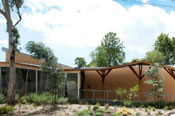 |
Sherbrooke Family and Children’s Centre
The Sherbrooke Family and Children's Centre is an integrated family and children's centre, located in the Dandenong Ranges south east of Melbourne. The hub was borne out of a community need for increased access to long day care, responding to the needs of children at risk, Aboriginal and Torres Strait Islander families, and working parents.
For the service to be viable, the council sought the colocation of day care with other services and, in consultation with the community, the hub was established in 2013, including a number important complementary services to meet the needs of the children and families of the area.
Read the case study.
|
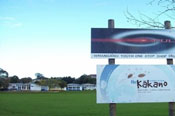 |
The Pulse
Te Hotu Manwa Service Centre, operating as The Pulse, is a service centre for families and young people, delivering a number of community services. Established in 2006, it aims to engage the community of Whangarei, with a particular focus on addressing issues of teenage pregnancy, low socio-economic status, domestic violence and suicide.
The Pulse brokers multi-agency partnerships, engaging both government and non-government organisations, and was established principally to improve service coordination and access for families and young people.
Read the case study.
|
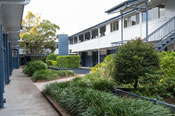 |
Woodridge State High School
The Woodridge community is highly disadvantaged, with low levels of education and high unemployment. The diverse community has a large proportion of culturally and linguistically diverse (CALD) members.
The Woodridge State High School Community Hub promotes the engagement of at-risk members of the community by connecting them with educational and employment activities. It also aims to break down the generational issue of unemployment for CALD populations, making up 84% of the clients across year 12 students and the community.
Read the case study.
|
